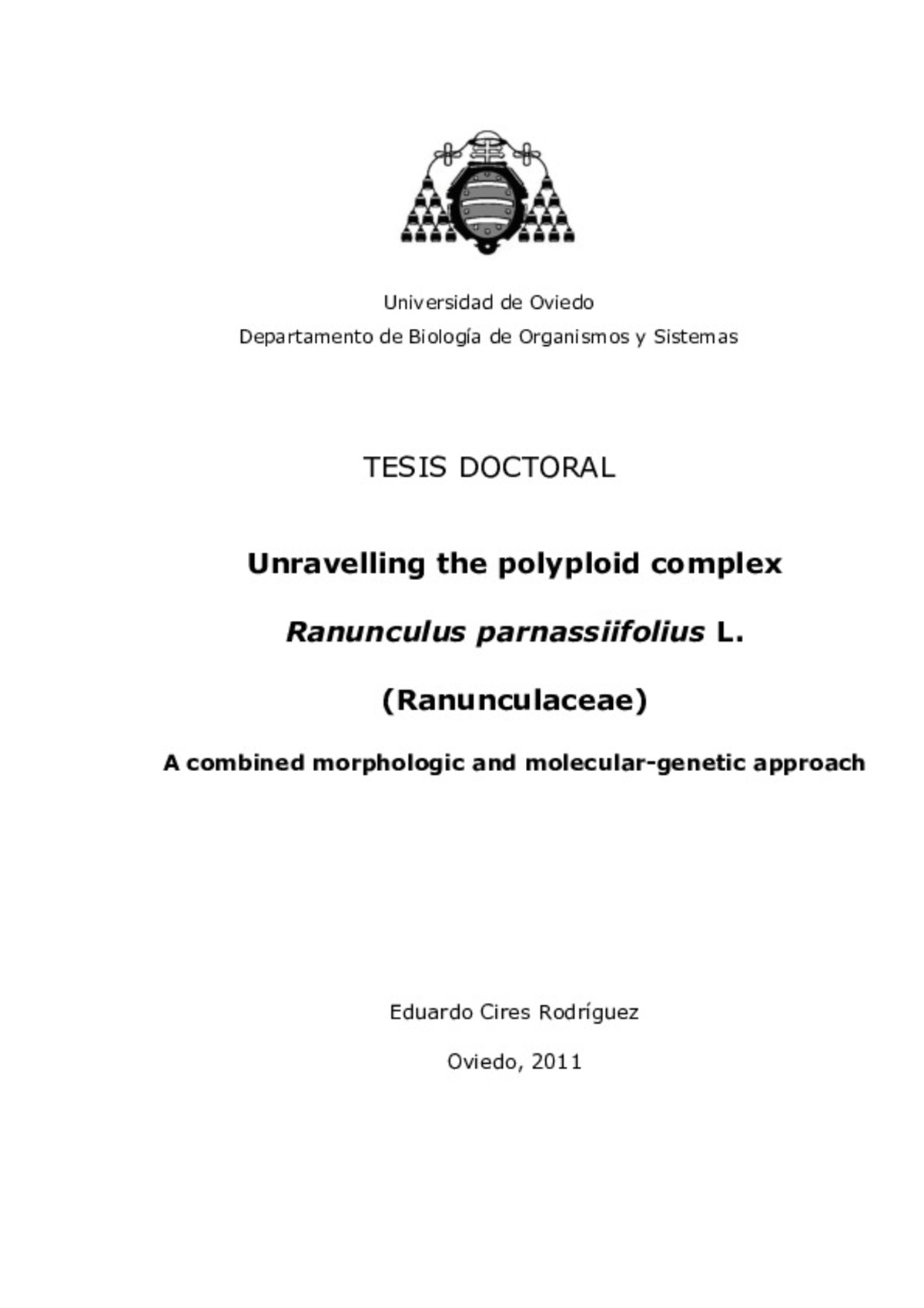Unravelling the polyploid complex Ranunculus parnassiifolius L. (Ranunculaceae): A combined morphologic and molecular-genetic approach
Autor(es) y otros:
Centro/Departamento/Otros:
Palabra(s) clave:
Botánica
Fecha de publicación:
Descripción física:
Resumen:
Ranunculus parnassiifolius L. is an orophilous plant distributed throughout Central and Southwestern Europe (Cantabrian Mountains, Pyrenees and Alps), where at least five taxa have traditionally been recognized. However, the latest researches in this polyploid complex have shown the complexity of its evolutionary history. The aim of this study was to assess the diversity throughout its distribution range (including material from the type localities) and reassess the current systematics applied to the group, using several molecular techniques: ITS (Internal Transcribed Spacer), PCR-RFLP (Restriction Fragment-Length Polymorphisms), cpDNA (sequencing of coding and non-coding plastid regions), AFLP (Amplified Fragment Length Polymorphism), RAPD (Random Amplified Polymorphic DNA), ISSR (Inter-Simple Sequence Repeat); multivariate morphometric analyses and genome size estimation based on flow cytometric measurements. One of the most relevant results is the existence of numerous arguments to support the separation of the R. parnassiifolius subsp. cabrerensis from the polyploid complex R. parnassiifolius s.l., and it should consequently be treated as an independent species (R. cabrerensis versus R. parnassiifolius) and in fact it constitutes an evolutionary line in itself. Finally, we propose a new evolutionary scenario within the group and suggest conservation strategies
Ranunculus parnassiifolius L. is an orophilous plant distributed throughout Central and Southwestern Europe (Cantabrian Mountains, Pyrenees and Alps), where at least five taxa have traditionally been recognized. However, the latest researches in this polyploid complex have shown the complexity of its evolutionary history. The aim of this study was to assess the diversity throughout its distribution range (including material from the type localities) and reassess the current systematics applied to the group, using several molecular techniques: ITS (Internal Transcribed Spacer), PCR-RFLP (Restriction Fragment-Length Polymorphisms), cpDNA (sequencing of coding and non-coding plastid regions), AFLP (Amplified Fragment Length Polymorphism), RAPD (Random Amplified Polymorphic DNA), ISSR (Inter-Simple Sequence Repeat); multivariate morphometric analyses and genome size estimation based on flow cytometric measurements. One of the most relevant results is the existence of numerous arguments to support the separation of the R. parnassiifolius subsp. cabrerensis from the polyploid complex R. parnassiifolius s.l., and it should consequently be treated as an independent species (R. cabrerensis versus R. parnassiifolius) and in fact it constitutes an evolutionary line in itself. Finally, we propose a new evolutionary scenario within the group and suggest conservation strategies
Tesis Publicada:
Notas Locales:
Tesis 2011-036
Colecciones
- Indurot [170]
- Tesis [7520]
- Tesis doctorales a texto completo [2033]
Ficheros en el ítem





